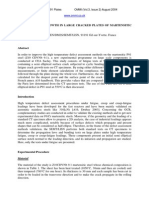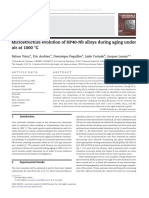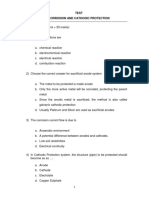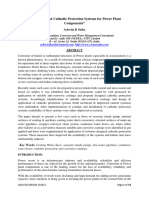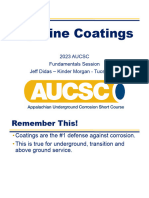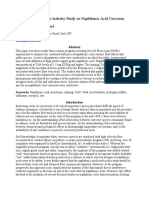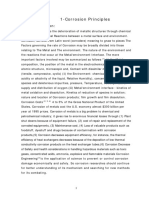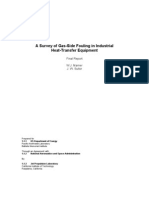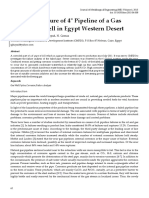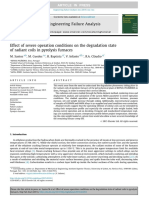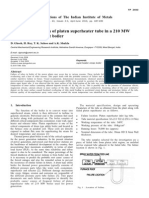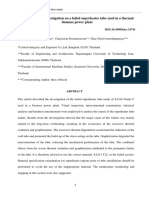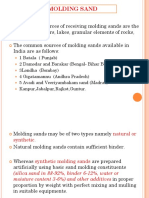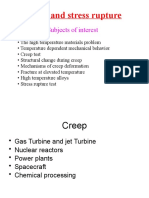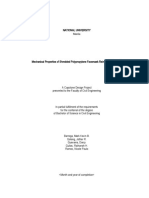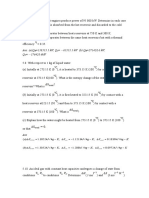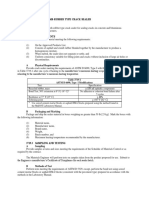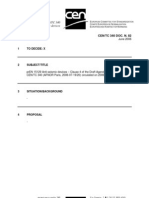0% found this document useful (0 votes)
163 views10 pagesCoal Boiler Superheater Tube Failure Analysis
The premature failure of a coal-fired boiler superheater tube within 9 months of operation was investigated. Visual examination revealed thick-lip fracture, parallel cracks, bulging, and non-uniform wall thickness. Microstructural analysis showed complete spheroidization, thick scale formation of ~1mm, creep voids, and decreased hardness - indicative of overheating and creep. Fractography showed intergranular failure. The estimated operating temperature of ~677°C, well above the design limit of 540°C, indicated that overheating led to accelerated creep and failure.
Uploaded by
faiqCopyright
© © All Rights Reserved
We take content rights seriously. If you suspect this is your content, claim it here.
Available Formats
Download as PDF, TXT or read online on Scribd
0% found this document useful (0 votes)
163 views10 pagesCoal Boiler Superheater Tube Failure Analysis
The premature failure of a coal-fired boiler superheater tube within 9 months of operation was investigated. Visual examination revealed thick-lip fracture, parallel cracks, bulging, and non-uniform wall thickness. Microstructural analysis showed complete spheroidization, thick scale formation of ~1mm, creep voids, and decreased hardness - indicative of overheating and creep. Fractography showed intergranular failure. The estimated operating temperature of ~677°C, well above the design limit of 540°C, indicated that overheating led to accelerated creep and failure.
Uploaded by
faiqCopyright
© © All Rights Reserved
We take content rights seriously. If you suspect this is your content, claim it here.
Available Formats
Download as PDF, TXT or read online on Scribd
/ 10


